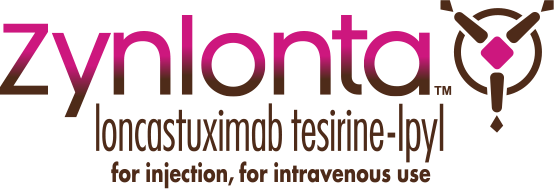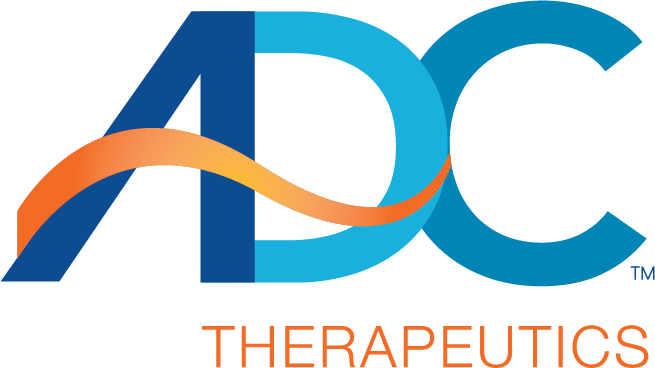

Discover ZYNLONTA for the treatment of relapsed or refractory (r/r) diffuse large B-cell lymphoma (DLBCL) in adults

Unmet Needs in Relapsed or Refractory DLBCL
Efficacy and Safety Results
Dosage, Administration, and Handling of ZYNLONTA
Questions & Answers
ZYNLONTA is indicated for the treatment of adult patients with relapsed or refractory large B-cell lymphoma after two or more lines of systemic therapy, including diffuse large B-cell lymphoma (DLBCL) not otherwise specified, DLBCL arising from low-grade lymphoma, and high-grade B-cell lymphoma.
This indication is approved under accelerated approval based on overall response rate. Continued approval for this indication may be contingent upon verification and description of clinical benefit in a confirmatory trial(s).
WARNINGS AND PRECAUTIONS
- Effusion and Edema
- Serious effusion and edema occurred in patients treated with ZYNLONTA. Grade 3 edema occurred in 3% (primarily peripheral edema or ascites) and Grade 3 pleural effusion occurred in 3% and Grade 3 or 4 pericardial effusion occurred in 1%.
- Monitor patients for new or worsening edema or effusions. Withhold ZYNLONTA for Grade 2 or greater edema or effusion until the toxicity resolves. Consider diagnostic imaging in patients who develop symptoms of pleural effusion or pericardial effusion, such as new or worsened dyspnea, chest pain, and/or ascites such as swelling in the abdomen and bloating. Institute appropriate medical management for edema or effusions.
- Myelosuppression
- Treatment with ZYNLONTA can cause serious or severe myelosuppression, including neutropenia, thrombocytopenia, and anemia. Grade 3 or 4 neutropenia occurred in 32%, thrombocytopenia in 20%, and anemia in 12% of patients. Grade 4 neutropenia occurred in 21% and thrombocytopenia in 7% of patients. Febrile neutropenia occurred in 3%.
- Monitor complete blood counts throughout treatment. Cytopenias may require interruption, dose reduction, or discontinuation of ZYNLONTA. Consider prophylactic granulocyte colony-stimulating factor administration as applicable.
- Infections
- Fatal and serious infections, including opportunistic infections, occurred in patients treated with ZYNLONTA. Grade 3 or higher infections occurred in 10% of patients, with fatal infections occurring in 2%. The most frequent Grade ≥3 infections included sepsis and pneumonia.
- Monitor for any new or worsening signs or symptoms consistent with infection. For Grade 3 or 4 infection, withhold ZYNLONTA until infection has resolved.
- Cutaneous Reactions
- Serious cutaneous reactions occurred in patients treated with ZYNLONTA. Grade 3 cutaneous reactions occurred in 4% and included photosensitivity reaction, rash (including exfoliative and maculo-papular), and erythema.
- Monitor patients for new or worsening cutaneous reactions, including photosensitivity reactions. Withhold ZYNLONTA for severe (Grade 3) cutaneous reactions until resolution. Advise patients to minimize or avoid exposure to direct natural or artificial sunlight including exposure through glass windows. Instruct patients to protect skin from exposure to sunlight by wearing sun-protective clothing and/or the use of sunscreen products. If a skin reaction or rash develops, dermatologic consultation should be considered.
- Embryo-Fetal Toxicity
- Based on its mechanism of action, ZYNLONTA can cause embryo-fetal harm when administered to a pregnant woman because it contains a genotoxic compound (SG3199) and affects actively dividing cells.
- Advise pregnant women of the potential risk to a fetus. Advise females of reproductive potential to use effective contraception during treatment with ZYNLONTA and for 9 months after the last dose. Advise male patients with female partners of reproductive potential to use effective contraception during treatment with ZYNLONTA, and for 6 months after the last dose.
- In a pooled safety population of 215 patients (Phase 1 and LOTIS-2), the most common (>20%) adverse reactions, including laboratory abnormalities, were thrombocytopenia, increased gamma-glutamyltransferase, neutropenia, anemia, hyperglycemia, transaminase elevation, fatigue, hypoalbuminemia, rash, edema, nausea, and musculoskeletal pain.
- In LOTIS-2, serious adverse reactions occurred in 28% of patients receiving ZYNLONTA. The most common serious adverse reactions that occurred in ≥2% receiving ZYNLONTA were febrile neutropenia, pneumonia, edema, pleural effusion, and sepsis. Fatal adverse reactions occurred in 1%, due to infection.
- Permanent treatment discontinuation due to an adverse reaction of ZYNLONTA occurred in 19% of patients. Adverse reactions resulting in permanent discontinuation of ZYNLONTA in ≥2% were gamma-glutamyltransferase increased, edema, and effusion.
- Dose reductions due to an adverse reaction of ZYNLONTA occurred in 8% of patients. Adverse reactions resulting in dose reduction of ZYNLONTA in ≥4% was gamma-glutamyltransferase increased.
- Dosage interruptions due to an adverse reaction occurred in 49% of patients receiving ZYNLONTA. Adverse reactions leading to interruption of ZYNLONTA in ≥5% were gamma-glutamyltransferase increased, neutropenia, thrombocytopenia, and edema.
- You may report side effects to the FDA at (800) FDA-1088 or www.fda.gov/medwatch. You may also report side effects to ADC Therapeutics at 1-855-690-0340. Please click here for the full Prescribing Information, including Patient Information.
Please click here for the full Prescribing Information, including Patient Information.
Please see full Prescribing Information, including Patient Information.
Expert insights provided by:

Mehdi Hamadani, MD
Professor of Internal Medicine
Director, BMT & Cellular Therapy Program
Medical College of Wisconsin

Laura E. Finn, MD
Program Director, Hematology/Oncology Fellowship Program
Co-Director, Bone Marrow Transplant Program
Hematology Chair, Precision Cancer Therapy Research Program
Division of Hematology and Bone Marrow Transplant
Gayle & Tom Benson Cancer Center
Ochsner Medical Center
New Orleans, LA
In this broadcast, Dr Hamadani and Dr Finn will:
Discuss unmet needs in the treatment of r/r DLBCL
Introduce ZYNLONTA for the treatment of patients with r/r DLBCL who have received at least 2 prior lines of systemic therapy
Explore key efficacy and safety data from the phase 2 LOTIS-2 trial
This is a paid promotional education program sponsored by ADC Therapeutics; CME credit will not be available.
